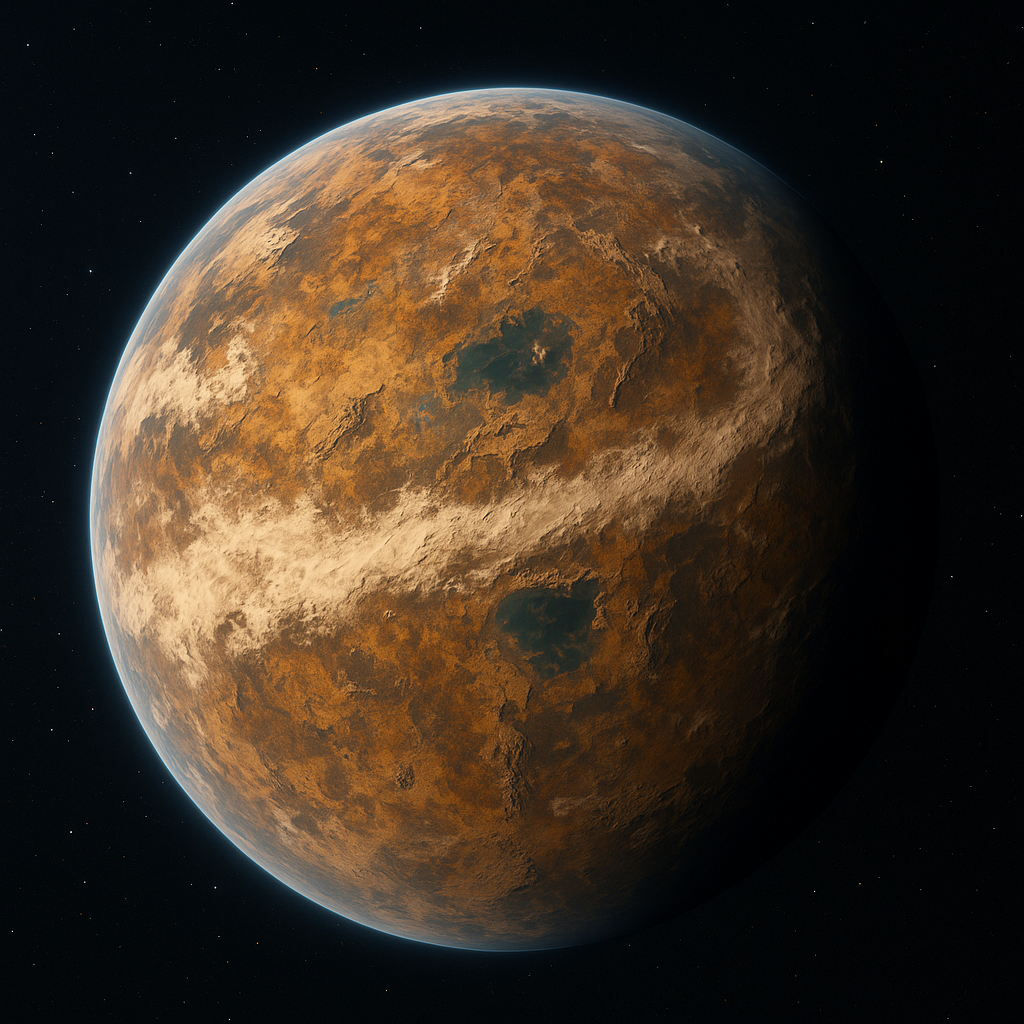Delmira
Delmira
Astrographical Information
Galaxy
Milky Way
Galactic ArmOrion
SystemCraehlil System
OrbitingCraehlil
Orbital positionSecond Planet
Orbital Distance0.72 AU (107,710,466 km)
Orbital characteristics
Aphelion 0.75 AU (112,198,403 km)
Perihelion 0.69 AU (103,222,529 km)
Semi-major axis 0.72 AU (107,710,466 km)
Eccentricity 0.038
Orbital period (sidereal) 257.2 days
Average orbital speed 34.1 km/s
Mean anomaly 164.9°
Inclination- 2.6° – Craehlil's equator;
- 1.8° – invariable plane;
- 2.9° – J2000 ecliptic
Longitude of ascending node 49.2°
Time of perihelion 18.7 days
Argument of perihelion 116.4°
Moon(s) 0
Physical Information
Diameter 10,218 km (6,349.3 mi)
Mean radius 5,109 km (3,174.6 mi)
Equatorial radius 5,131 km (3,188.3 mi)
Polar radius 5,082 km (3,157.6 mi)
Flattening 0.0095
Circumference- 32,132 km; equatorial
- 31,998 km; meridional
Surface area 329,073,000 km²
- Land: 302,430,500 km²
- Water: 26,642,500 km² (8.1% of Delmira's surface area)
Volume 5.59 × 10¹¹ km³
Mass 5.12 × 10²⁴ kg
Mean density 6.42 g/cm³
Surface Gravity 13.76 m/s²
Moment of inertia factor 0.314
Escape velocity 13.6 km/s
Synodic rotation period 33.1 hours
Sidereal rotation period 31.8 hours
Equatorial rotation velocity 437.3 m/s
Axial tilt 18.9°
Axial Precession 14,800 years (moderate axial drift from uneven internal mass distribution)
Albedo- 0.27 geometric
- 0.21 Bond
Temperature 205–692 K
Surface Temperature- -68°C (–90.4°F) Min
- 39°C (102.2°F) Mean
- 102°C (215.6°F) Max
Surface absorbed dose rate 33.4 μGy/h
Surface equivalent dose rate 38.7 μSv/h
Apparent magnitude –1.9" to 3.3"
Absolute magnitude (H) 5.41
Surface pressureAtmosphere181.672 kPa; 1.79 atm (at sea level)
Composition by volume- 58.4% Nitrogen (dry air)
- 22.5% Oxygen (dry air)
- 7.0% Sulfur dioxide
- 4.2% Carbon dioxide
- 2.3% Water vapor (variable)
- 2.1% Argon
- 1.1% Methane
- 1.4% Reactive particulates (dust, industrial ash)
- 0.9% Trace gases (xenon, chlorides, polyaromatic hydrocarbons)




Comments